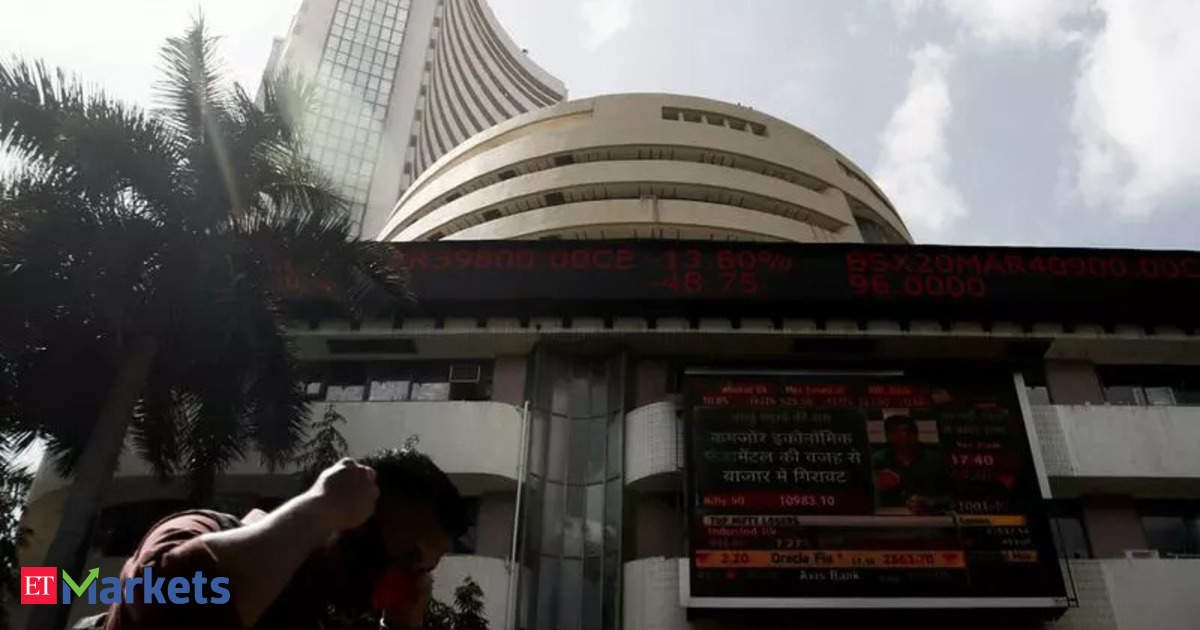Like the previous week, the benchmark indices displayed some resilience during the first three sessions, but sentiment turned negative in the latter half. Consequently, both the Nifty and Sensex closed near their weekly lows at 24,968.40 and 81,757.73, respectively.
Analyst Sudeep Shah, Deputy Vice President and Head of Technical & Derivatives Research, SBI Securities, interacted with ET Markets regarding the outlook on Nifty and Bank Nifty for the upcoming week. Here are the edited excerpts from his chat:
How are you reading the markets right now?
The benchmark index Nifty ended in the red for the third consecutive week, reflecting sustained bearish sentiment in the market. On the weekly chart, it has formed a bearish candle with a lower high and lower low structure — a classic indication of downward momentum. Throughout the week, the index attempted three times to reclaim its 20-day EMA but was rejected on each occasion. It is now trading decisively below the 20-day EMA, which has started to edge lower, further reinforcing the bearish undertone.
Additionally, the upward slope of the 50-day and 100-day EMAs has begun to flatten, signalling a potential loss of medium-term momentum. This slowdown in the EMA slope suggests growing indecisiveness and weakening strength among bulls. On the momentum front, the daily RSI is quoting at 43, marking its lowest level since April 2025. Moreover, the RSI is trading below its 9-day average, and both are in falling mode, indicating weakening internal strength and reinforcing the ongoing bearish setup.
Going ahead, Monday’s trading session will be crucial for the index as heavyweights like Reliance Industries, HDFC Bank, and ICICI Bank are set to announce their Q1 results over the weekend. The reaction to these earnings could provide near-term direction and either amplify the current trend or spark a reversal.
Regarding crucial levels, the zone of 24940-24900 will act as immediate support for the index, as it is the confluence of the 50-day EMA level and the 61.8% Fibonacci retracement level of its prior upward rally (24473-25669). If the index slips below the 24,900 level, then the next crucial support is placed at the 24,700 level. On the upside, the zone of 25,130-25,160 will act as an immediate hurdle for the index.
Are there any global factors that you see that can affect our markets?
Yes, one of the key developments to watch is the ongoing tariff-related discussions between India and the US. Any escalation or resolution in these talks could have a direct impact on trade dynamics, especially in sectors like pharmaceuticals, IT services, and industrial goods.
Bank Nifty seemed to have a stronger index. How about now?
The banking benchmark index, Bank Nifty, also extended its losing streak, ending in the red for the third consecutive week. On the daily chart, it witnessed a breakdown from a Rising Wedge pattern on Friday and also slipped below its 20-day EMA, which is a sign of growing bearish pressure.
A key technical observation lies in the daily RSI behaviour. Despite a mid-week pullback, the daily RSI failed to surpass the 60 level, which is a bearish sign as per RSI range shift rules. Currently, the RSI is quoting at 45, its lowest level since March 2025, indicating a notable loss of momentum and growing weakness in the trend.
Going ahead, the 50-day EMA zone of 55,950-55,850 will act as immediate support for the index. If the index slips below the 55,850 level, then the next crucial support is placed at the 55300 level. On the upside, the 20-day EMA zone of 56,700-56,800 will act as an important hurdle for the index.
FIIs remain net sellers. So, two parts to this topic here: one, what do you read of this? Secondly, how dependent is our market currently on this variable?
In the cash segment, FIIs have offloaded equities worth nearly 17,000 crores so far this month, indicating persistent selling pressure. Simultaneously, in the derivatives segment, the FII long-short ratio has slipped to just 15%, the lowest in the recent period. This reflects an aggressive build-up of short positions and a cautious near-term outlook from institutional investors.
However, it’s worth noting that historically, whenever the FII long-short ratio drops below the 15% mark, markets often witness a limited downside, as excessive pessimism tends to set the stage for short-covering rallies or a reversal in sentiment. While the current data suggests a bearish stance by FIIs, the extremely low long-short ratio also indicates that much of the negativity may already be priced in, leaving room for a potential bounce if a positive trigger emerges.
Let’s talk stocks. Where did you see long buildup and outperformance? And what would you recommend out of those stocks?
Technically, Dalmia Bharat, Godrej Properties, Bajaj Finance, Chennai Petro, and Sumitomo Chemical are likely to continue their outperformance.
Similarly, for any shorting opportunities within sectors and stocks?
Technically, BDL, HAL, and Shiriram Finance are looking good from a short-sell perspective.
What’s the view on RIL and Axis Bank after Q1 results?
In the short term, both stocks are bearish as they are quoting below their 20-day EMA level. The RSI of Axis Bank is quoting below 40, which is a bearish sign. Further, the Reliance daily RSI is quoting below its 9-day average.
How do you see HDFC Bank and ICICI Bank placed?
Currently, the major trend for both HDFC Bank and ICICI Bank remains sideways, reflecting a lack of strong directional bias. On the technical front, the daily RSI for both stocks is oscillating in the 40–60 range, indicating a phase of consolidation and indecisiveness among traders.
(Disclaimer: Recommendations, suggestions, views and opinions given by the experts are their own. These do not represent the views of The Economic Times)




